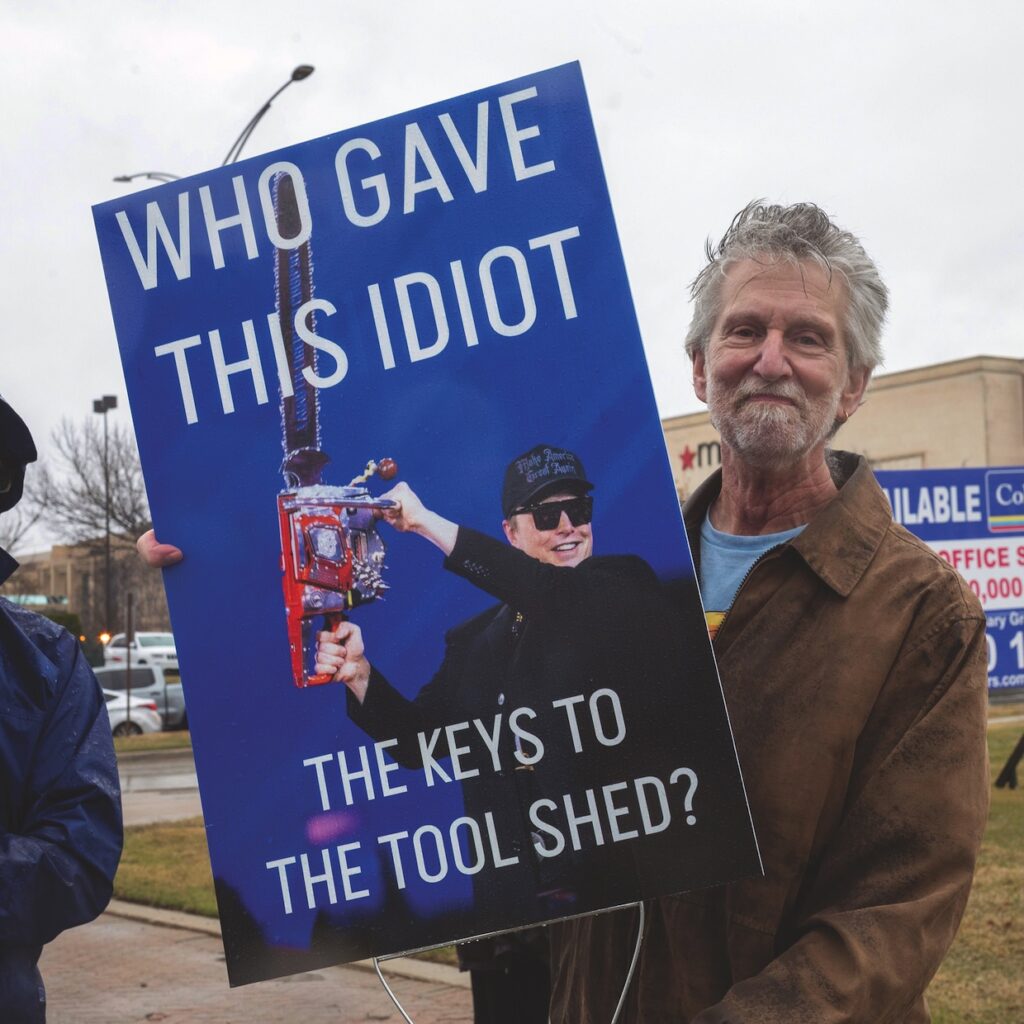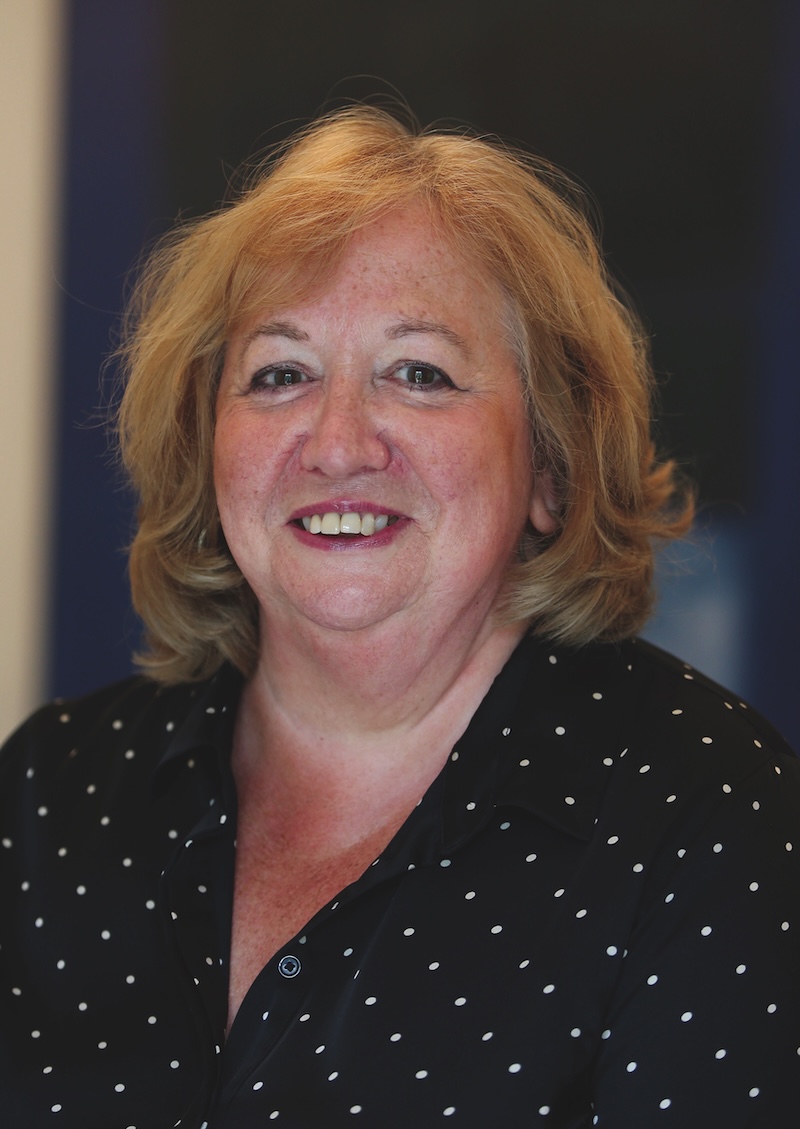Forget Musk’s slash and burn—this is what real change looks like

How the NHS can do better without more money is the big question the ten year plan needs to answer. Health economist Andi Orlowski argues for making change with consensus rather than a chainsaw — and explains why ‘allocative efficiency’ is our best bet for real reform.

With the new ten year plan on the horizon (at the time of writing), the NHS in England is once again promising transformation: digital-first care, prevention at scale, integrated models, local autonomy. But all of this is set against a backdrop of real crisis.
There’s no blank cheque coming. Funding is flatlining. Inflation and demand are outpacing capacity. Cuts are already happening, some quietly, others with brute force. We’re seeing services reduced, teams disbanded, programmes defunded. Not through strategic choices, but through necessity. “Cut now, think later” has become a defining feature of this reform cycle.
It doesn’t have to be this way. If we want a better NHS, one that survives, improves and becomes more equitable, we need to spend better, not just spend less. That means understanding what really works and what doesn’t. And it means having the courage to stop doing things that no longer add value.
There’s a saying in healthcare that gets wheeled out whenever times are tight: “We’ll just have to do more with less.”
It sounds noble, even defiant. But in reality, it usually means doing the same things, stretched thinner, with greater risk and less margin for error. It leads to longer waits, thinner services, exhausted staff and worse outcomes.
So here’s a better idea: let’s do better with what we already have. Let’s move away from across-the-board squeezes and start looking at how we’re using our resources now. What’s working? What isn’t? What adds value and what simply adds cost? That’s where what economists call ‘allocative efficiency’ comes in. It’s not about cutting corners; it’s about making deliberate, evidence-based choices.
Let’s talk about cuts
The world has been watching Elon Musk wield a chainsaw through the US government with his Department of Government Efficiency (DOGE)—a chaotic, ham-fisted attempt to cut costs by dismantling institutions, laying off staff, and centralising control. It’s high drama, low planning. It’s not transformation, it’s theatre—scorched earth dressed up as reform.
We don’t need a DOGE. And we don’t need a Musk. What the NHS needs is something more rigorous, robust and quite frankly beautiful: system stewardship.
This is where health economists and analysts can really help. Often, when NHS managers hear the word ‘economist’, their hearts sink as they imagine anonymous suits sat in Whitehall, red-stamping ‘no’ across budget requests. However, the NHS actually has a strong cohort of friendly health economists who, using techniques like allocative efficiency, can help managers not to just do everything more cheaply, but to do the right things with the resources we’ve got.
Fortunately, the tools we need are hiding in plain sight. Using Programme Budgeting and Marginal Analysis (PBMA) and the Socio-Technical Allocation of Resources (STAR) approach, economists can help the NHS make smarter, braver decisions transparently and fairly.
Tools that save lives, not just money
PBMA is designed for reallocating resources. It maps current spending, identifies marginal gains, and supports decisions that generate the most health benefit per pound. It’s ideal when you have decent cost and activity data and need to optimise within existing budgets.
STAR, on the other hand, is better suited when the data isn’t perfect or the outcomes are more complex. It explicitly combines technical evidence with stakeholder values, involving clinicians, patients, finance leads and system partners in building a shared view of what should be invested in, and what can be stopped.
Both methods confront the reality of opportunity cost: that spending on one thing means not spending on something else. But they do so in a way that builds consensus, accountability and trust, not fear. Unlike the Musk model of dramatic and traumatic disruption for its own sake, these frameworks invite people in. They build consensus. They hold the system to account. They ask not just “what’s the cheapest option?” but also “what’s the right thing to do, and how can we do it well?”
Take chronic obstructive pulmonary disease (COPD). Five Integrated Care Systems used STAR to review their COPD care pathways. Over 100 professionals and 500 patients came together to weigh up what’s currently delivered against what could be done with the same money. The result? Investment shifted upstream—into group consultations, education, virtual wards, and housing interventions—while some less effective or duplicative services were scaled back.
Or consider ‘boilers on prescription’—a headline-worthy intervention that turned out to be both cost-effective and morally sound. By insulating the cold homes of patients with respiratory illness, some areas saved £4,000 per patient on emergency admissions. That’s not just good economics. That’s smart, human, joined-up care.
None of this was done with a chainsaw or with spreadsheets in back rooms. It was done through deliberation, modelling, and inclusive design. That’s what real system change looks like.
Courage to decommission
If we’re serious about doing better without more money, we must face up to one truth: some services need to stop. Not all services are equally effective. Not all interventions remain relevant. And not everything we fund is helping the people it’s meant to.
Decommissioning isn’t failure. It’s a mark of maturity. Every system evolves, and what worked ten years ago may no longer be right today. Holding onto every intervention out of habit or fear just drains the oxygen from innovation.
But these decisions must be defensible. They must be made transparently, using evidence, and with input from people affected. Tools like PBMA and STAR give leaders the confidence and cover to do this well. They make sure the rationale is clear. They document trade-offs and create accountability. They ensure that value, not volume, is what drives the system forward.
Giving the system confidence
In times of upheaval, allocative efficiency does something that Musk-style slash and burn cuts never will: it inspires confidence.
Confidence in the numbers, yes—but more importantly, in the process. In a system under intense public and political scrutiny, being able to show your workings is a game changer. It helps the public, staff and politicians to see why certain things are funded and others aren’t. It brings the public into the logic of the system, rather than leaving them guessing about decisions made behind closed doors.
If the Ten Year Plan is to succeed, it must embed robust prioritisation and allocative thinking into its DNA from the start. Otherwise, it risks being more of the same: ambitions on paper, business as usual on the ground.
This time, we need something different. Something honest. Something rigorous.
We need the plan to acknowledge that there’s no blank cheque coming and then show us how we’ll still move forward by choosing better, spending smarter, and working together to shape a more equitable system.
That means bringing economists and analysts out of the shadows and putting them at the heart of reform. Not as naysayers, but as enablers. Not with chainsaws, but with maths, a conscience and insight.
There’s no Elon Musk in the NHS. And thank goodness for that. We don’t need iconoclasts with flamethrowers. We need methodical, evidence-based, human-centred planning. We need brave decisions, made well, not fast. Because we don’t need to do more. We need to do better. And we already have the tools to begin.
- Andi Orlowski is director of the NHS Health Economics Unit, and a senior adviser to NHS England on population health management.r responsibilities that belong to others. Again, this is a challenge requiring diplomacy and interpersonal skills.
Related Stories
-

Professional regulation: still more questions than answers
After the government unveiled a new barring scheme for board-level executives this summer, plans for regulating NHS managers became a little clearer. But many big questions about how the NHS will regulate, support and develop its future leaders remain unanswered. Rhys McKenzie reports.
-

We’re proud of what MiP has done – managers need it more than ever
As MiP reaches its 20th birthday, general secretary Christina McAnea re-affirms UNISON’s commitment to the unique joint venture that has given NHS management a home and a voice.
-

Strange ways, here we come
Creating a ‘neighbourhood NHS’ will demand a different mindset, unfamiliar ways of working and difficult decisions on finances and staffing. Middle managers as well as senior leaders will play a big part in making it happen, writes Nigel Edwards.
Latest News
-

Government proposal for sub-inflation pay rise “not good enough”, says MiP
Pay rises for most NHS staff should be restricted to an “affordable” 2.5% next year to deliver improvements to NHS services and avoid “difficult” trade-offs, the UK government has said.
-

Unions refuse to back “grossly unfair” voluntary exit scheme for ICB and NHS England staff
NHS trade unions, including MiP, have refused to endorse NHS England’s national voluntary redundancy (VR) scheme, describing some aspects of the scheme as “grossly unfair” and warning of “potentially serious” tax implications.
-

Urgent action needed retain and recruit senior leaders, says MiP
NHS leaders are experiencing more work-related stress and lower morale, with the government’s sweeping reforms of the NHS in England a major factor, according to a new MiP survey.